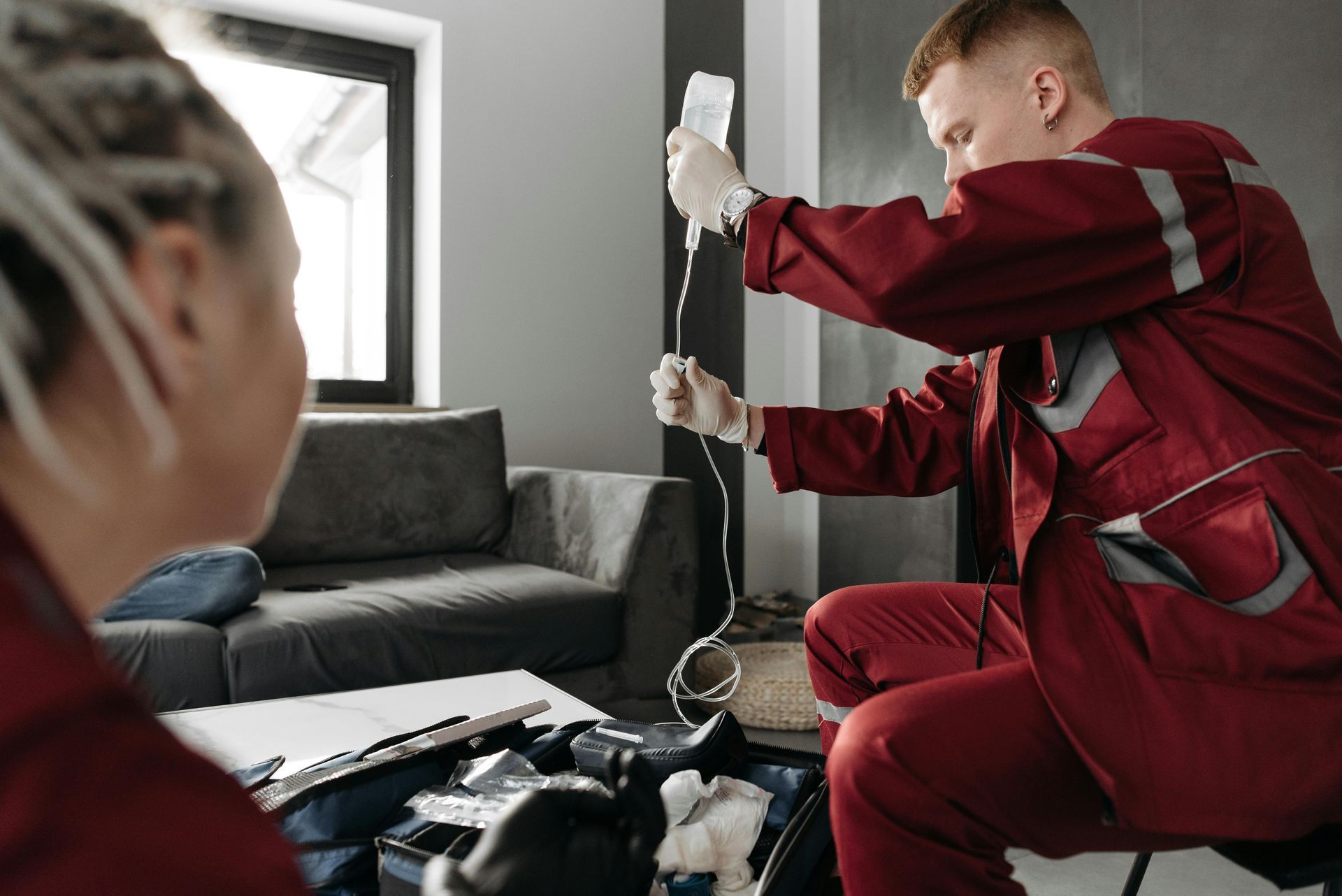IV Therapy for Joint and Muscle Health: Fast Recovery and Relief

Medically reviewed by Micaela Strevay, FNP-C, PMHNP-BC
Table of Contents

Intravenous (IV) therapy has gained popularity in recent years for its ability to deliver nutrients, vitamins, and hydration directly into the bloodstream. This method is particularly beneficial for individuals seeking to enhance their joint and muscle health. By understanding the various aspects of IV therapy, one can appreciate its advantages and applicability in promoting musculoskeletal wellness.
Understanding IV Therapy
What is IV Therapy?
IV therapy is a medical technique that administers fluids, electrolytes, medications, or nutrients directly into a patient's bloodstream via a vein. This method allows for rapid absorption, ensuring that the body receives the necessary components efficiently. Unlike oral supplements, which may be hindered by digestive processes, IV therapy bypasses such barriers, making it a favored choice for individuals with specific health needs.
Typical applications of IV therapy include hydration, replenishment of nutrient deficiencies, and support in recovery after intense physical activity. By utilizing this method, healthcare providers can tailor nutrient delivery to an individual’s specific health goals, particularly concerning joint and muscle health. Additionally, IV therapy has gained popularity in wellness circles, where it is often used for beauty treatments, energy boosts, and hangover relief, showcasing its versatility beyond traditional medical applications.
How Does IV Therapy Work?
The process of IV therapy begins with a healthcare professional inserting a thin catheter into a vein, usually in the arm or hand. Once the IV is in place, a fluid bag containing the prescribed solution—often a mix of vitamins, minerals, and hydration fluids—is connected to the catheter. The fluid then flows directly into the bloodstream at a controlled rate, allowing for immediate effects.
IV therapy sessions generally last from 30 minutes to a few hours, depending on the specific treatment being administered. Patients often experience a sense of relaxation during the process, as they can recline comfortably while the nutrients are delivered. Many clinics also enhance the experience with soothing music, dim lighting, and even complimentary beverages, creating a spa-like atmosphere that encourages patients to unwind. Furthermore, the customization of IV drips means that individuals can receive tailored treatments that address their unique health concerns, such as immune support, anti-aging, or even athletic performance enhancement, making each session a personalized health experience.
The Connection Between IV Therapy and Joint and Muscle Health
The Role of Nutrients in Joint and Muscle Health
Nutrients play a vital role in maintaining healthy joints and muscles. Key components include vitamins, minerals, and amino acids, which all contribute to muscle repair, inflammation reduction, and joint mobility. For instance, Vitamin C is essential for collagen synthesis, while Vitamin D is crucial for calcium absorption, impacting bone health.
Furthermore, omega-3 fatty acids have shown promise in reducing joint inflammation, while magnesium plays a critical role in muscle function. When these nutrients are delivered through IV therapy, they reach the bloodstream rapidly and can begin working in the body with immediate effect.
The Benefits of IV Therapy for Musculoskeletal System
IV therapy offers numerous benefits for musculoskeletal health. Some of the advantages include:
- Enhanced Recovery: Athletes and active individuals often utilize IV therapy to speed up recovery after strenuous exercise, reducing muscle soreness and improving overall performance.
- Improved Hydration: Proper hydration is crucial for joint lubrication, and IV therapy can ensure optimal hydration levels.
- Alleviation of Pain: The anti-inflammatory properties of certain nutrients included in IV therapy can help alleviate pain associated with arthritis and other musculoskeletal disorders.
Different Types of IV Therapies for Joint and Muscle Health
Vitamin Infusion Therapy
Vitamin infusion therapy delivers essential vitamins directly into the bloodstream, ensuring adequate nutrient levels. Common vitamins used include Vitamin C, B vitamins, and Vitamin D. These infusions support immune function, energy levels, and overall well-being, directly benefiting joint and muscle health.
Hydration Therapy
Hydration therapy focuses on replenishing fluids and electrolytes lost due to sports, physical activity, or illness. Proper hydration is vital for maintaining joint health because it helps lubricate joints and facilitate smooth movements. This therapy can be particularly beneficial for athletes or individuals who experience frequent muscle cramps and tension.
Amino Acid IV Therapy
Amino acid IV therapy provides the building blocks for protein synthesis, essential for muscle recovery and repair. Many people engage in heavy physical activity, which can lead to muscle breakdown. By providing amino acids directly into the bloodstream, this therapy enhances the body’s ability to recover and build lean muscle mass effectively.
What to Expect During an IV Therapy Session
Preparing for Your IV Therapy Session
Preparation for an IV therapy session is relatively straightforward. Patients may need to hydrate adequately before their appointment and disclose any allergies or pre-existing conditions to their healthcare provider. It’s also advisable to wear comfortable clothing that allows easy access to the arms.
The IV Therapy Process
Upon arrival, patients will be greeted by a healthcare professional who will explain the process and answer any questions. After inserting the IV catheter, the nutrient solution will begin to flow. Patients can relax, read, or even watch TV during the session, making the experience more enjoyable.
Post-Therapy Care and Expectations
After the therapy, patients may feel a sense of rejuvenation due to the direct intake of nutrients. It's essential to drink plenty of water post-session and monitor one's body response. Minor side effects, such as slight soreness at the insertion site, are normal and typically resolve quickly.
Safety and Side Effects of IV Therapy
Potential Risks and Side Effects
While IV therapy is generally safe, there are some potential risks to be aware of. These may include infection at the insertion site, allergies to the administered substances, or phlebitis, which is inflammation of the vein. Patients should always consult with a qualified healthcare provider to ensure that IV therapy is appropriate for their individual health needs.
Who Should Avoid IV Therapy?
Certain individuals may need to avoid IV therapy, including those with specific allergies to components commonly administered, acute kidney conditions, or other serious health issues. It is imperative to undergo thorough evaluation and consultation before beginning any form of IV therapy to ensure safety and efficacy.
In conclusion, IV therapy presents a viable option for enhancing joint and muscle health. By understanding its benefits and applications, individuals can make informed decisions to support their overall wellbeing.





